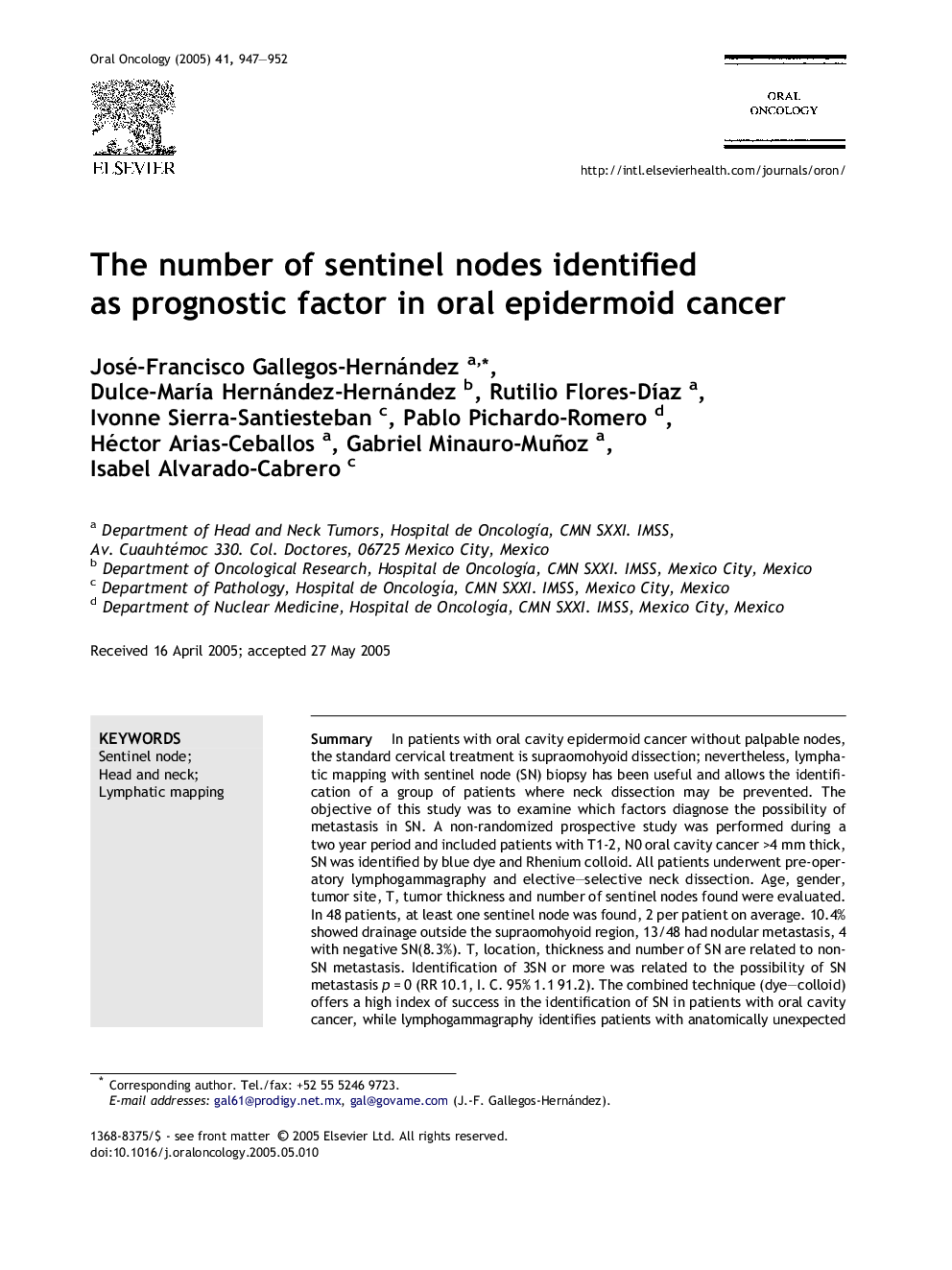| Article ID | Journal | Published Year | Pages | File Type |
|---|---|---|---|---|
| 9216598 | Oral Oncology | 2005 | 6 Pages |
Abstract
In patients with oral cavity epidermoid cancer without palpable nodes, the standard cervical treatment is supraomohyoid dissection; nevertheless, lymphatic mapping with sentinel node (SN) biopsy has been useful and allows the identification of a group of patients where neck dissection may be prevented. The objective of this study was to examine which factors diagnose the possibility of metastasis in SN. A non-randomized prospective study was performed during a two year period and included patients with T1-2, N0 oral cavity cancer >4 mm thick, SN was identified by blue dye and Rhenium colloid. All patients underwent pre-operatory lymphogammagraphy and elective-selective neck dissection. Age, gender, tumor site, T, tumor thickness and number of sentinel nodes found were evaluated. In 48 patients, at least one sentinel node was found, 2 per patient on average. 10.4% showed drainage outside the supraomohyoid region, 13/48 had nodular metastasis, 4 with negative SN(8.3%). T, location, thickness and number of SN are related to non-SN metastasis. Identification of 3SN or more was related to the possibility of SN metastasis p = 0 (RR 10.1, I. C. 95% 1.1 91.2). The combined technique (dye-colloid) offers a high index of success in the identification of SN in patients with oral cavity cancer, while lymphogammagraphy identifies patients with anatomically unexpected drainage. Patients with T1 less than 2 cm, not located on the tongue with thickness <5 mm and more than 2 SN were less likely to have metastasis in non-sentinel nodes. The identification of at least 3 sentinel nodes decreases the possibility of identifying patients with hidden metastasis (p = 0.04).
Related Topics
Health Sciences
Medicine and Dentistry
Dentistry, Oral Surgery and Medicine
Authors
José-Francisco Gallegos-Hernández, Dulce-MarÃa Hernández-Hernández, Rutilio Flores-DÃaz, Ivonne Sierra-Santiesteban, Pablo Pichardo-Romero, Héctor Arias-Ceballos, Gabriel Minauro-Muñoz, Isabel Alvarado-Cabrero,
